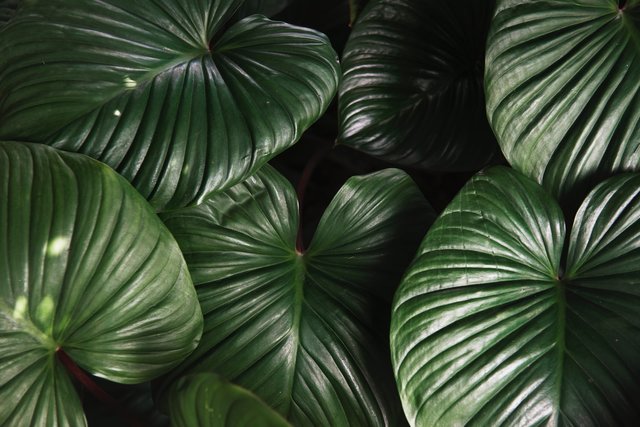Plants to the Rescue

BRING THE OUTDOORS IN
Are you craving a breath of invigorating fresh air amidst these housebound days of indoor refuge from the winter elements? Are you one of the many who now share an increasing concern about the quality of air within your home? Perhaps you’ve even considered purchasing an air purifier, difuser or any of the many offerings borne from an increasing awareness of the import of a clean, oxygen-rich atmosphere within the personal habitat.
The ultimate answer to a healthier home environment is simple, low-tech and richly aesthetic … bring the outdoors in! Research giants ranging from NASA, the German National Research Center for Environment & Health, and multiple universities have weighed in on the immune-depleting effects of noxious fumes common to most households, while corroborating the use of living plants as a viable counter-measure. For a fuller appreciation of how friendly foliage can enrich your home or workplace, a cursory survey of their health-promoting attributes is in order:
Indoor plants can remove up to 84% of air toxins in a 24hr period. Formaldehyde, for example, is continuously ‘outgassed’ from common building materials, furniture and flooring. This formidable toxin has been linked with many negative effects on human health, and associated with what has now been termed ‘sick building syndrome’. Two botanical notables, Ficus benjamina and Fatsia japonica have been the subject of research conducted by Korea’s National Horticultural Research Institute to discern the ability of these specimens to successfully improve air quality. The Korean study concluded that formaldehyde is taken in through the plant stomates during the day, and removed at night by the root zone with help of soil microbes.
How else can indoor plants upgrade air quality?
a) Reduction of carbon dioxide levels,
b) Increased humidity,
c) Enzymes within plant leaves break down free-floating contaminants, such as benzene and nitrogen dioxide into non- toxic components utilized by the plant,
d) Amelioration of airborne dust.Interior plants reduce stress and increase feelings of well being, while creating a stimulating and productive environment. Studies show that plants in the work place provide dramatic improvement in employees’ cognitive function, with a net reduction in ‘sick days’ taken. Interpersonal relationships also thrive in the presence of abundant flora, as plants foster a sense of greater compassion, and empathy for all living things.
Plants are an excellent buffer for all manner of ambient sound, wi-fi radiation, or any distractive ‘white noise’ from inside or outside sources.
My own passion for houseplants began in the 1960’s, when ‘living things’ inside the house became emblematic of a post-industrial culture seeking a less-synthetic ambiance, and reconnection to nature. Homes, dorm rooms and apartments were adorned with coleus, ferns, wandering jews, setcresia, and, of course, the ubiquitous spider plant.
Shared cuttings and baby plant starts became a culture unto itself in this pre-electronic era, while the typical kitchen window-sill became a would-be greenhouse for stem rootings, and mature plants alike. Dwellings were admired in direct proportion to their degree of jungle demeanor, and no greater compliment could be paid a fellow indoor gardener than a request for ‘cuttings’. Beyond mere 60’s nostalgia, the intuitive sense of that generation initiated the trend of indoor gardens now commonplace in work centers, corporate buildings and shopping complexes.
Fundamental to growing indoor house plants is to understand their roots, in a geographic sense, that is. They almost exclusively hail from tropical or subtropical regions, and thrive best in conditions that best mimic their place of origin. This is the absolute key to a long and mutually-rewarding experience with any botanical co-habitant.
CARE AND MAINTENANCE
As with any container plant, whether indoors or outdoors, ample soil available for root growth will eventually be depleted. Plan on transplanting every 1-2 years, and only into the next size container. Bigger is not better!
Duplicating a ‘tropical’ climate in the home provides the plant(s) with needed humidity. Keep a spray bottle with water near by, and spritz your plants at least a couple times a day. You can also place the bottom of a potted plant in a saucer or tray, with small gravel and or decorative glass. This will maintain water at its base for increased humidity, but not at the expense of waterlogged, or rotting roots.
Watering: the soil should be evenly moist, and use lukewarm water to avoid root shock.
Place the plants in bright indirect light. Direct sun can burn the leaves.
Regular, consistent fertilization is necessary, typically every 30 days. There are very effective liquid organic fertilizers to maintain health of both plant and soil.
Avoid placing near a heat source such as fireplace, wall heater or central heating vent.
Lastly, don’t forget to talk to your plants and ‘tune in’ on how they are doing. Multiple studies confirm that plants respond to encouragement by the human voice and soft peaceful music.
Health benefits aside, the indoor garden can stand alone as a lush urban oasis, or be designed as a contiguous counterpart to your outdoor gardening projects. So, before making your tools ready for outdoor spring gardening, you may consider expanding your indoor cultivation to combat winter ‘cabin-fever’, and assure the healthiest of indoor conditions during the final weeks of winter.
Never go to a doctor whose office plants have died. ~Erma Bombeck
Deborah Lando writes the weekly gardening column for the Triplicate, a daily newspaper serving the northern California-southern Oregon coastal region. As a longtime nursery owner, and overseer of Alfa Vedic Botanical Gardens, Deborah still finds time to teach gardening classes from basics to master level, and shares her substantial knowledge in organic gardening practices and garden Feng Shui.
Please join/follow our online community at any of the links below!
Discord: https://discordapp.com/invite/mdNWj5F
Youtube: https://www.youtube.com/
Facebook: https://facebook.com/alfavedic
Instagram: https://instagram.com/alfavedic
Twitter: https://twitter.com/alfavedic
Join The AV Revolution today on our website as well!
https://alfavedic.com/about-alfa-vedic
Life Force Proteins: https://alfavedic.com/product-categor...
Amino Boost: https://alfavedic.com/product-categor...
Zero-Point Liquids: https://alfavedic.com/product-categor...
Thermo Infusions: https://alfavedic.com/product-categor...
Immortality Teas: https://alfavedic.com/product-categor...
Carbon 60: https://alfavedic.com/product/carbon-60/